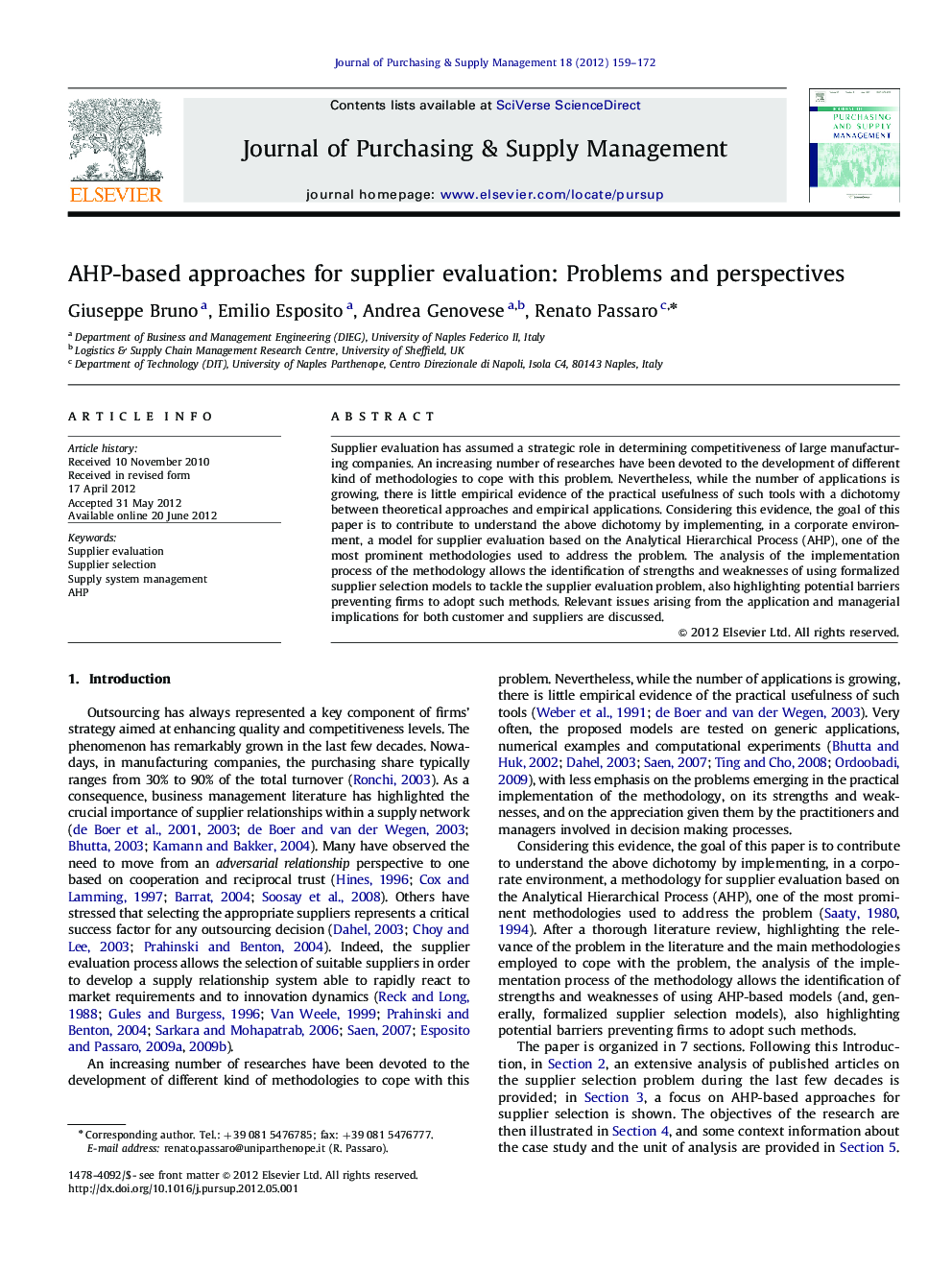| Article ID | Journal | Published Year | Pages | File Type |
|---|---|---|---|---|
| 1020892 | Journal of Purchasing and Supply Management | 2012 | 14 Pages |
Supplier evaluation has assumed a strategic role in determining competitiveness of large manufacturing companies. An increasing number of researches have been devoted to the development of different kind of methodologies to cope with this problem. Nevertheless, while the number of applications is growing, there is little empirical evidence of the practical usefulness of such tools with a dichotomy between theoretical approaches and empirical applications. Considering this evidence, the goal of this paper is to contribute to understand the above dichotomy by implementing, in a corporate environment, a model for supplier evaluation based on the Analytical Hierarchical Process (AHP), one of the most prominent methodologies used to address the problem. The analysis of the implementation process of the methodology allows the identification of strengths and weaknesses of using formalized supplier selection models to tackle the supplier evaluation problem, also highlighting potential barriers preventing firms to adopt such methods. Relevant issues arising from the application and managerial implications for both customer and suppliers are discussed.
► We highlight the weak and strong points emerging from the implementation of the AHP methodology. ► Important managerial implications emerge for large customers and small suppliers. ► A formal supplier evaluation method is a key management tool for supply systems.
